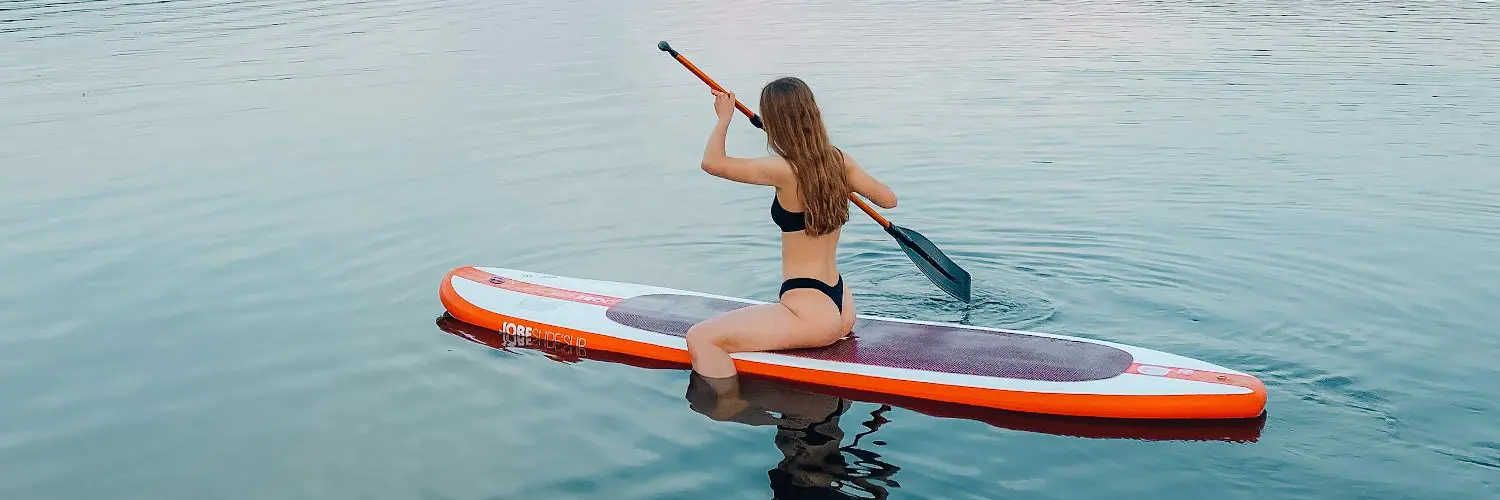What is the difference between stand up paddle boarding and surfing?
Stand up paddle boarding uses a paddle to move on the water surface and uses the whole body and hands as well to paddle around. While in surfing, the surfer uses a board to ride on the forward section, or face, of a moving wave of water, which usually carries the surfer towards the shore.
The term surfing refers to a person riding a wave , regardless of the stance. Waves suitable for surfing are generally found on ocean shores. A surfer can be lying on their belly while surfing. This is called belly boarding. There are some other types as well such as knee boarding and using foils.
Stand up paddle boarding can be done anywhere there is water. Contrary to this, the sport of surfing requires a wave to carry the individual forward and cannot be done on steady waters. The momentum of the waves carries the surfer forward in surfing while in standup paddle boarding the paddle is used to propel forward. So, it requires complete body motion for exploring the water.
Stand up paddle board compared with a surfboard
It is quite interesting to know how a stand up paddle board differs from a surfboard. Both boards differ drastically in size. SUP boards are longer, heavier and thicker. They are an excellent choice for beginners because they are very stable. They can be 14 feet long while the surf boards generally range from five to nine feet and are lighter in weight. Paddle board differs from surfboards in how they’re made, which leads to differences in flotation, dimensions, decking, rocker, and types. They are built on a similar concept as both are meant to float. However, they differ in how that basic design is implemented.
Key differences between an SUP board and a surf board:
Foam volume
The volume of the foam used in a paddle board is usually 100 liters while in a surfboard it varies between 25 to 32 liters.
Length
The length of standup paddle board is typically 10 or 11 feet and in some cases it can be 14 feet long. In comparison, surfboards are much shorter in length, usually 7-8 feet.
Width
The width of SUP board is 32-34 inches while a surfing board is 20-22 inches wide.
Thickness
SUP board’s thickness is 4 inches while a surf board’s thickness is 2-3 inches.
Decking
SUP is reinforced with padding whereas a thinner grip is preferred in a surf board.
Rocker
SUP is mostly flat in appearance whereas a surf board is available in a variety of shapes.
Types
Both come in many different types for many different purposes.
Reason for difference
The main difference lies in their usage. Stand up paddle boards are heavier because they are meant to glide over water and are more suited to stable waters. In comparison to that, surfboards are lighter in weight because they are meant to ride with or along waves which accounts for greater mobility.
Reasons of choosing SUP over surfing
Mobility
Using a paddle is much easier than lying on your stomach and padding with arms, which is generally required on a traditional surfboard.
Accessibility
Standing on a board is easier and is accessible to people of all ages compared to surfing, which requires the ability to push yourself quickly with braced knees.
Versatility
SUP boards can be used for variety of different purposes such as hauling camping gear to fishing, even yoga. The size and weight allow more versatility while a surfboard serves one purpose on the water.
Physicality
SUP is a solid core workout and uses entire body. It requires balance and attention all the time, so the overall workout is quite beneficial. As compared to that, surfing doesn’t involve as much physical activity.
Visibility
SUP allows you to see what is above and below you with peace of mind while in surfing you only see a fraction of it.
Closing Thoughts
SUP boarding is better on many aspects than surfing as it involves a lot of physical activity. It is a complete exercise for both your mind and body. It should be encouraged as a sport and more activities should be arranged for spreading awareness among others.








